Energy Gels for Running: How They Work and When You Should Take Them
The marathon brings many of those experiences to each and every one of us, but we are told that if we use energy gels , running will be much less miserable, and we will feel better in those final few miles of a race.
Is there a best energy gel for running?
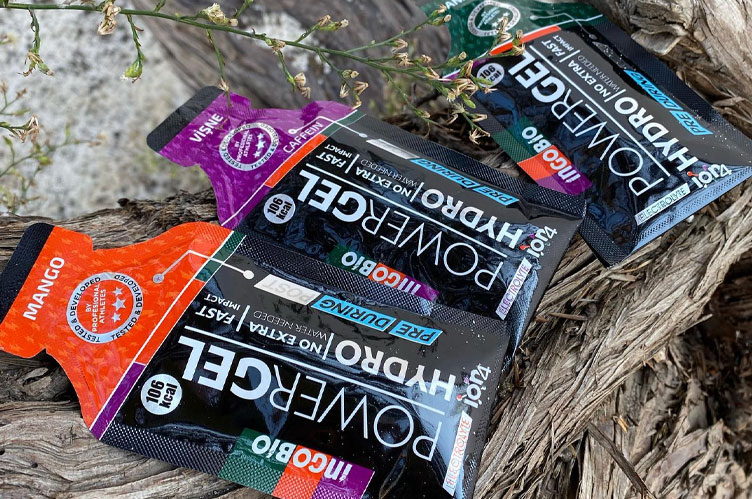 Today, we’re going to outline exactly how energy gels and other carbohydrate supplements work, which will help you understand exactly when and how often you should be taking them to help you find the best energy gel for you.
Today, we’re going to outline exactly how energy gels and other carbohydrate supplements work, which will help you understand exactly when and how often you should be taking them to help you find the best energy gel for you.
Why Is It Important To Take In Energy Gels During A Race?
It wasn’t long ago that runners relied solely on water, sports drinks, and maybe some flat cola as their primary carbohydrate supplement during marathons and half marathons.
Dick Beardsley told us about how he would grab a cup from a spectator in a marathon, look to see if it “looked” clean, and if so, drink it…and this is someone who almost won the Boston Marathon and was the feature of Duel in the Sun, one of the greatest Boston marathon finishes of all time.

You probably know by now that we like to think of ourselves as Boston marathon central, so we loved that story.
Luckily, our understanding of sports nutrition (specifically how glycogen is used during the marathon) has improved to the point that we now have an unlimited number of products to choose from, each designed to speed glycogen to our working muscles.
The problem these days is not in finding a glycogen delivery product, but rather in finding the best energy gel for you and then developing a strategic nutrition strategy to make sure you take in enough energy on race day.
Your body needs a lot of energy to run a marathon
Your body uses two primary sources of fuel to feed the muscles when you’re running – fat and carbohydrates.
Fat is a largely abundant resource, but is broken down into usable energy slowly, making it an ineffective fuel source when running anything faster than about 60-70% of your VO2max (roughly equivalent to your aerobic threshold or marathon pace).
Therefore, your body relies on carbohydrates as its primary fuel source when racing.
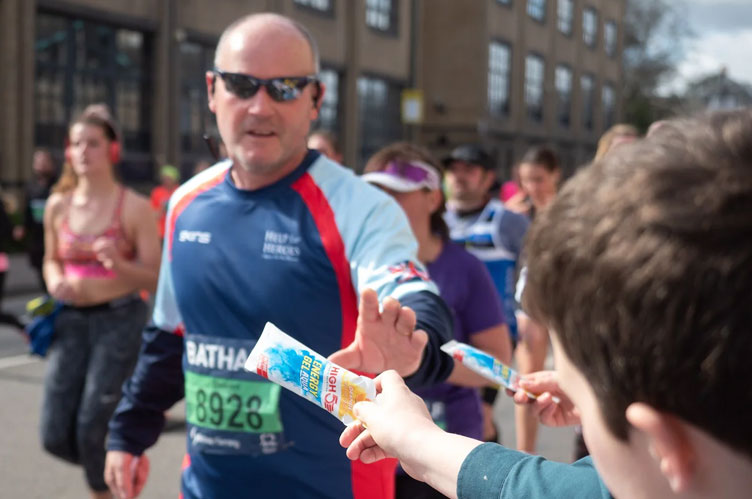
Here’s the deal: The faster you run, the greater the percentage of fuel will come from carbohydrates.
The problem with carbohydrates is that we can only store a limited amount in our muscles – even when you complete the perfect nutrition marathon taper.
Typically, we can store about 90 minutes of muscle glycogen when running at half marathon pace and about 2 hours when running at marathon pace.
So, if you’re not an elite, you’ll be running out of muscle glycogen long before you cross the finish line.
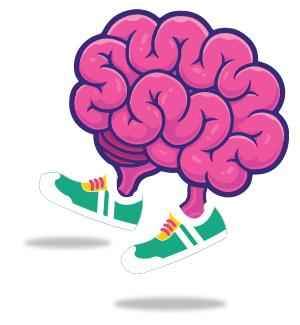
What do energy gels do?
They are designed to replenish carbohydrate stores that are depleted when running.
Sounds like energy gels are a savior, right?
Unfortunately, energy gels don’t provide a simple one-to-one replacement (something you won’t read on the label of your favorite gel) because the glycogen we ingest from gels doesn’t always make its way to the working muscles.
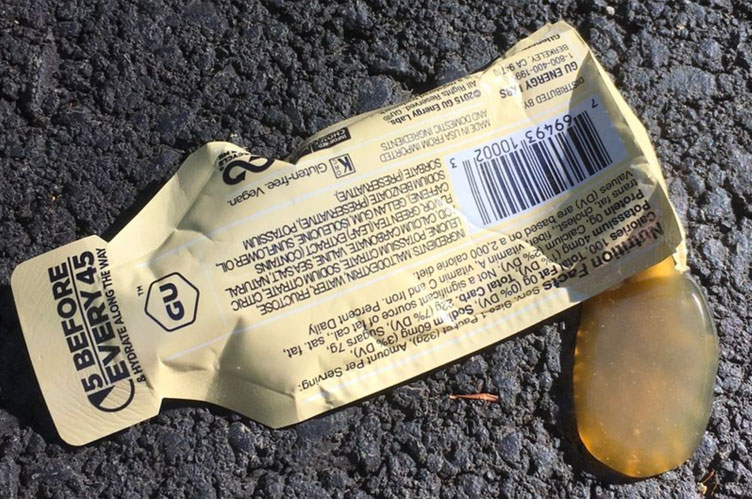
Why?
Because carbohydrates are stored in both the muscles and the liver and your performance on race day relies on using the glycogen stored in the muscle.
For glycogen to make its way to the muscles, it must first be digested, make it’s way through the intestinal wall, and then absorbed by the muscles.
This process takes time and isn’t very efficient.
However, gels will often “wake you up” in a very noticeable way because our brain only runs on the glucose stored in the liver.
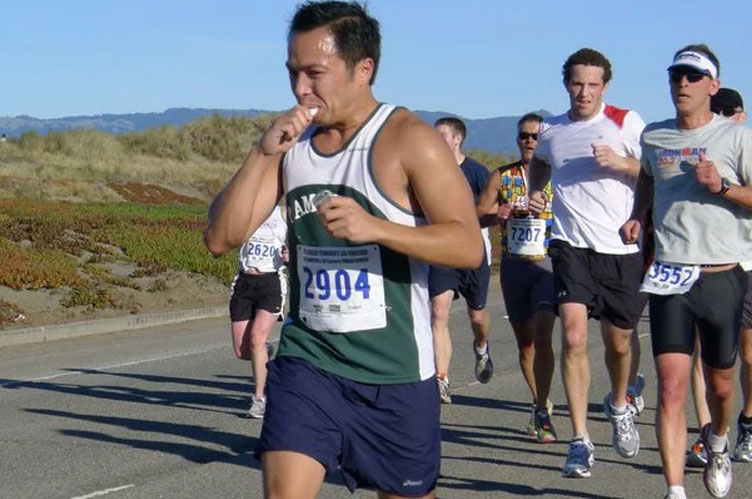
What’s the bottom line?
energy gels help replenish the glycogen and calories you’re burning when racing hard.
Energy gels aren’t very efficient or a simple one-to-one replacement, so timing and frequency are critical factors to avoiding the bonk.
Should you take an energy gel for running a half marathon or 10k?
We recently looked deep into the research about races half marathon and under, and we had some interesting findings that showed even just swigging a sports drink (without swallowing) is enough to give you a boost in a shorter race.
Here’s what we found:
A 5k is definitely too short to need carbs, either before or during your race
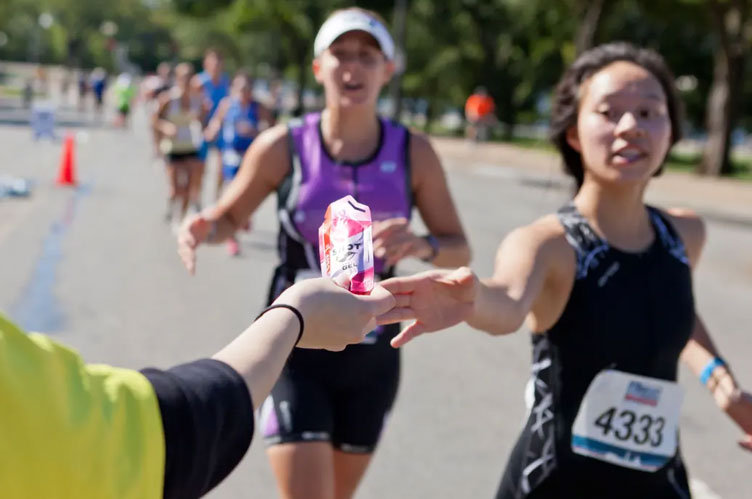 When it comes to a 10k, it will depend on how quick you are.
If you are able to run the 10k under 40 minutes, you do not need to take on any carbs, but if you run between 45-60 minutes, you should take a swig of a sports drink if you feel like you need to.
When it comes to a 10k, it will depend on how quick you are.
If you are able to run the 10k under 40 minutes, you do not need to take on any carbs, but if you run between 45-60 minutes, you should take a swig of a sports drink if you feel like you need to.
The benefits of taking on fuel do not make too much of a difference until you are running for 60-75 minutes though, so if you are running under that, there is not really a big need for it, unless you want to take something to wake you up!
When Should You Take Energy Gels For Running?
If only there was a simple answer to this, but:
Just like almost every facet of running, the timing of when you should take your gels is individual.
Each runner absorbs and processes carbohydrates at a different rate – some can feel the effect within three minutes while others might take up to 15 minutes.
This variation in absorption rate has to do with how efficient your stomach is at digesting carbohydrate and the type of carbohydrate you’re consuming (which we cover in this article).
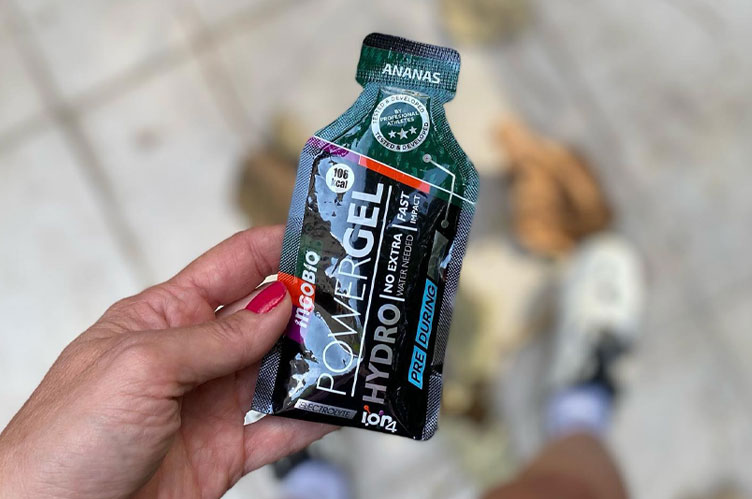
This is important: When running hard, your body often diverts blood away from the digestive track to help give your legs more blood (and therefore oxygen).
Sometimes, your body shuts the stomach down completely while other times it just slows down.
This is why it isn’t uncommon to see runners throw up fluids or gels right after ingesting them late into the race. Therefore, you want to begin taking gels relatively early into the race.
By taking the gels early, your body shouldn’t be under great duress and you have a better chance of processing the sugars faster and without stomach issues.
When should I start taking gels?
Somewhere between 45-60 minutes, depending on how well you generally react to gels in training.
Should I take a gel before the race?
Some runners like to take a gel right before the gun goes off.
While there is no problem with this from a physiological standpoint, I find it better to consume a more substantial breakfast, with less simple sugars.
This helps you avoid eating nothing but simple sugar for 3-4 hours.
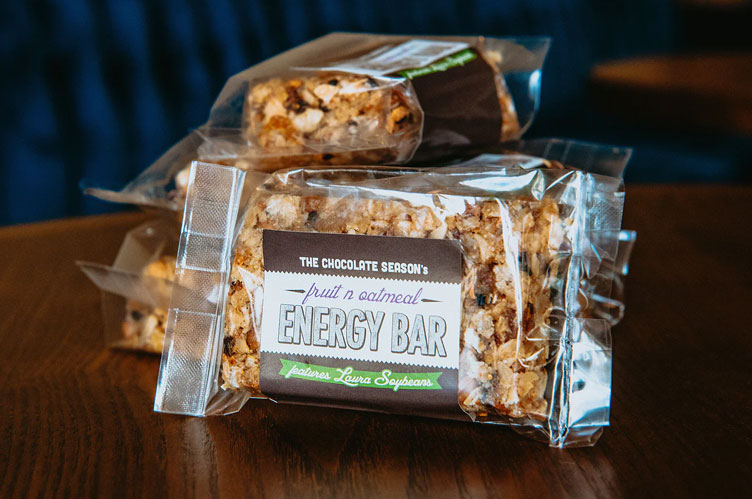
What’s the bottom line?
My suggestion for breakfast would be a bagel with peanut butter, an energy bar, or oatmeal. Read this article for a full breakdown of pre marathon nutrition guidelines.
How Often Should You Take Energy Gels For Running?
As we’ve already discussed, the speed at which you’re able to digest and process energy gels plays an important roll in how often you want to take them.
Because the digestion process will be slowed or halted the further you get into the race, you need to be careful not to overload your stomach.
Therefore, I suggest waiting about 45-60 minutes between gels before taking another one. Most runners should be closer to the 60 minute mark, especially if they have sensitive stomachs.
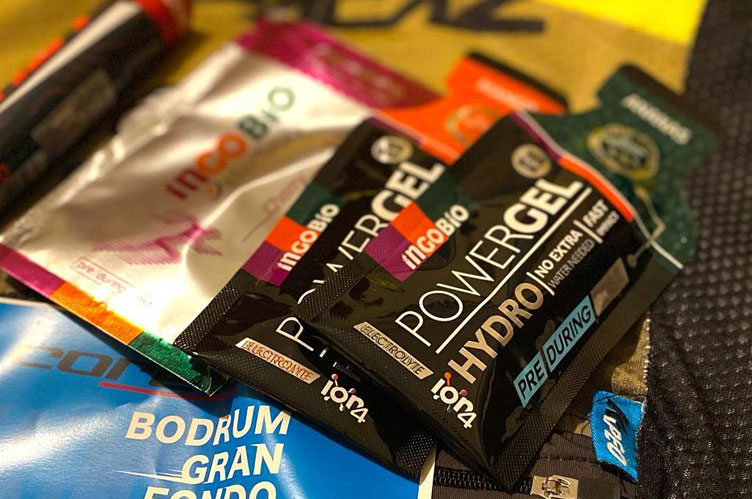 The second reason to wait 45-60 minutes between taking gels is that you don’t want to speed too much simple sugar into your blood stream at once.
The second reason to wait 45-60 minutes between taking gels is that you don’t want to speed too much simple sugar into your blood stream at once.
Remember, the simple sugars from the energy gels will first be absorbed into your blood stream as glucose.
The sugar will stay in the blood stream until absorbed by the working muscles or other organs. If you continue to pump sugar into the blood stream, you’ll suffer the same fate as your children if left alone on Halloween – sick from too much sugar.
The other aspect to keep in mind is that your digestive track is trainable like most every other part of your body.
So
f you eat gels in training, particularly if you do it at set intervals that correlate to when you will take them during the race, your body will learn to keep the digestive track running and you will digest the gel more readily.
This is why it’s critical you practice your exact fueling strategy as often as possible in training.
What Else Do You Need To Know About Energy Gels?
Now that we’ve covered some of the basics of how energy gels work and how to properly strategize a marathon nutrition plan or half marathon nutrition plan, we’ll cover some practical tips that can help you execute on race day.
How to take energy gels if your stomach is upset
Like we’ve discussed, it’s possible that your stomach might shutdown during the latter half of the race.
If this happens to you and you’ve been unable to take energy gels late in the race, try eating only a small portion of the gel, but in closer intervals.
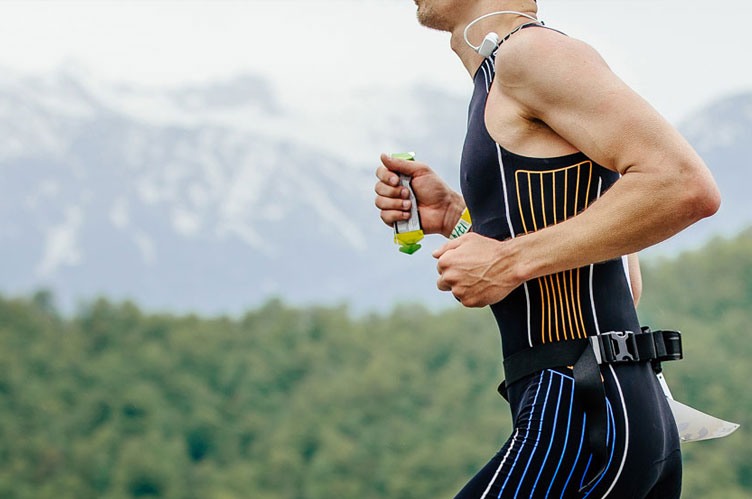 For example, eat 1/4 of the packet every 20 minutes.
For example, eat 1/4 of the packet every 20 minutes.
You’ll still consume the energy you need, but you’ll give your stomach a better chance to properly digest without getting sick.
ALWAYS take with water
Always take energy gels with water, never alone and NEVER with Gatorade.
Without water, energy gels will take longer to digest and enter the blood stream. If you take an energy gel with a sports drink, you run the risk of ingesting too much simple sugar at once.
Taken together, a gel and sports drink could be delivering close to 60 grams of pure sugar – yack.
Test out flavors and brands to see which energy gel is best for you
Not all energy gels are the same. Some are more viscous, some taste better, and each flavor can be delicious or wretched to another runner.
The important thing is that you have to experiment and find something that works.
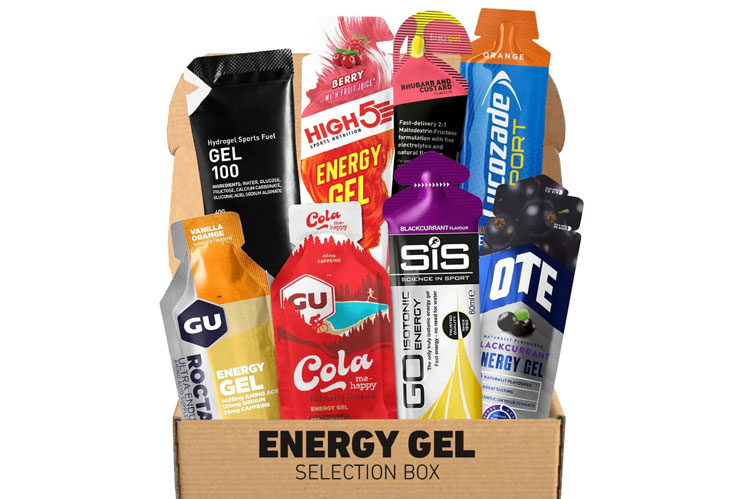 At the 2008 Olympic Trials, Desi Linden (Davila) had trouble keeping down her fluids and gels.
Everything she took in came back up. So, after fading to the finish, Desi implemented gels in practice, but even that process wasn’t smooth.
At the 2008 Olympic Trials, Desi Linden (Davila) had trouble keeping down her fluids and gels.
Everything she took in came back up. So, after fading to the finish, Desi implemented gels in practice, but even that process wasn’t smooth.
During long workouts, Linden would force herself to drink and eat gels, but her system still rejected it.
In her own words: “It was actually kind of disgusting”. However, knowing she could never make the podium if she didn’t figure out the issue, Desi continued to force her body to adapt.
Eventually she found the right combination of gels and fluids to train her stomach to handle the sugars and she went on to run 2:22 in Boston.
Next time you think “I just can’t do it”, imagine what an Olympian would say to that.
How To Make A Marathon Nutrition Plan That Works For You
As I’ve mentioned in this article, there are a lot of factors that come into play when it comes to when and how often you should be consuming energy gels .
- How many carbohydrates are you burning and how many do you need to replace?
- How efficient is your stomach at digesting carbohydrates?
- What type of sugar does your energy gel contain?
- Will this need to change later in a race?
- What type of gel is going to work best for you?
- How do you factor in the sugar you take with your sports drink?
These are the type of individualized questions that make following a generalized nutrition plan difficult. You need to develop a strategy that caters to your physiological needs. That’s why we’re conducting a special Marathon Nutrition Webinar.
During the webinar, we’re going to discuss how to calculate your physiological data (how many carbohydrates you’ve stored, what percentage of carbohydrates you’ll burn, how much fluid you’ll sweat, and more) along with a step-by-step plan in the final few days before the race to help you create a nutrition plan that works.



